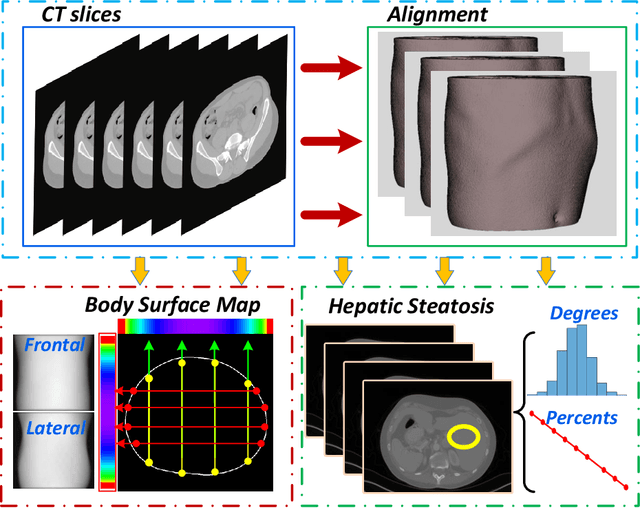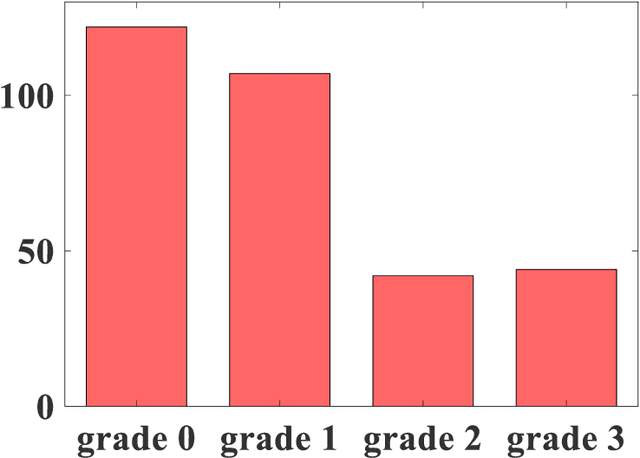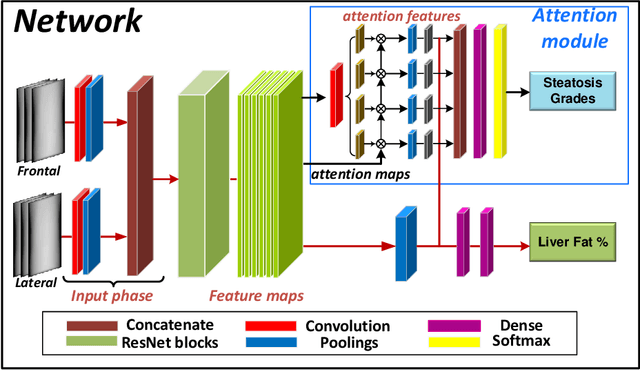James Hahn
Liver Fat Quantification Network with Body Shape
May 18, 2024



Abstract:It is clinically important to detect liver fat content as it is related to cardiac complications and cardiovascular disease mortality. However, existing methods are associated with high cost and/or medical complications (e.g., liver biopsy, medical imaging technology) or only roughly estimate the grades of steatosis. In this paper, we propose a deep neural network to accurately estimate liver fat percentage using only body shapes. The proposed framework is composed of a flexible baseline regression network and a lightweight attention module. The attention module is trained to generate discriminative and diverse features, thus significantly improving performance. To validate our proposed method, we perform extensive tests on medical datasets. The experimental results validate our method and prove the efficacy of designing neural networks to predict liver fat using only body shape. Since body shapes can be acquired using inexpensive and readily available optical scanners, the proposed method promised to make accurate assessment of hepatic steatosis more accessible.
Measuring Effectiveness of Video Advertisements
Jan 28, 2019



Abstract:Advertisements are unavoidable in modern society. Times Square is notorious for its incessant display of advertisements. Its popularity is worldwide and smaller cities possess miniature versions of the display, such as Pittsburgh and its digital works in Oakland on Forbes Avenue. Tokyo's Ginza district recently rose to popularity due to its upscale shops and constant onslaught of advertisements to pedestrians. Advertisements arise in other mediums as well. For example, they help popular streaming services, such as Spotify, Hulu, and Youtube TV gather significant streams of revenue to reduce the cost of monthly subscriptions for consumers. Ads provide an additional source of money for companies and entire industries to allocate resources toward alternative business motives. They are attractive to companies and nearly unavoidable for consumers. One challenge for advertisers is examining a advertisement's effectiveness or usefulness in conveying a message to their targeted demographics. Rather than constructing a single, static image of content, a video advertisement possesses hundreds of frames of data with varying scenes, actors, objects, and complexity. Therefore, measuring effectiveness of video advertisements is important to impacting a billion-dollar industry. This paper explores the combination of human-annotated features and common video processing techniques to predict effectiveness ratings of advertisements collected from Youtube. This task is seen as a binary (effective vs. non-effective), four-way, and five-way machine learning classification task. The first findings in terms of accuracy and inference on this dataset, as well as some of the first ad research, on a small dataset are presented. Accuracies of 84\%, 65\%, and 55\% are reached on the binary, four-way, and five-way tasks respectively.
 Add to Chrome
Add to Chrome Add to Firefox
Add to Firefox Add to Edge
Add to Edge